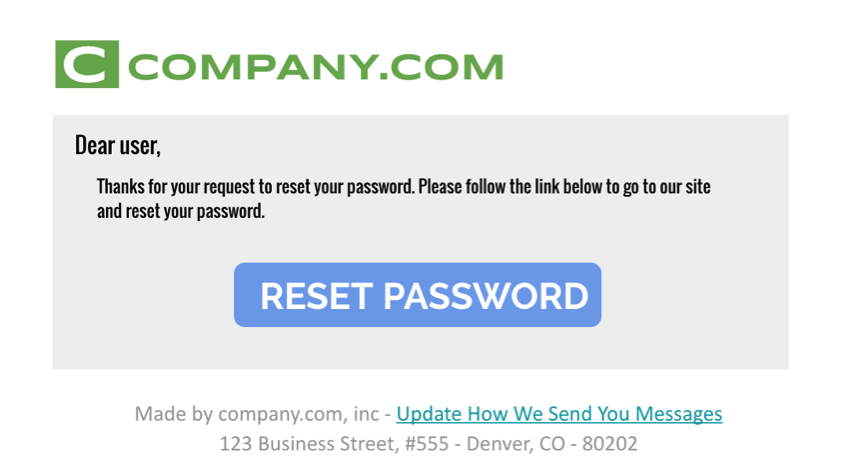As we saw in our previous post,
What Makes an Email Message Transactional or Promotional?, these two types of messages will likely get viewed and delivered by mailbox providers (like Gmail and Yahoo) quite differently.
A sender must be honest about what type of message their content will be grouped in and a part of this honest reflection also has to do with whether or not the sender includes an unsubscribe link. In this post, I'll share recommendations on how to approach including an unsubscribe link in your email messages.
First, let’s look at the power and purpose of the unsubscribe function. Despite what some marketers may think, an unsubscribe link is not meant to punish the sender and shouldn’t be looked at as the same as when a recipient marks a message as “spam.”
It is a function that is meant to act as communication between recipient and sender. It simply says, “I had interest in your brand previously, but no longer wish to receive messages.” So what messages should include this option?
I do believe that a true transactional message should not have the exact same unsubscribe link as a truly promotional message. This is because a user is looking for a different type of communication from truly transactional messages. For example, a password reset message would seem odd to have an unsubscribe option because a user shouldn’t want to “NEVER RECEIVE A PASSWORD RESET MESSAGE AGAIN.” (Which is essentially what that clicking that link would be saying.) If a user can’t log in, they would want to be able to fix that issue in the future, right?
I understand the desire for marketers to want to be accommodating and give this option in every message they send. However, instead, I would recommend including an
email preferences link in transactional messages:

and leave the “unsubscribe” link for promotional messages.

This way, you’re still allowing the user to give feedback on what messages they want from the sender, but just in a more targeted way.
Senders also need to review their promotional and transactional messages to see how any of the content of the messages may reflect each other. It's important to remember that mailbox providers are always looking to protect their inbox users and will look for indicators to tell them where to place messages (spam or inbox).
So, using a standard unsubscribe link (or even the link behind your Facebook/Twitter page icon) in both types of messages may make the reputation of one affect the other. This is not just because pushing users to your social media presence seems “promotional.” It also has the chance of your “company.com/twitter” location being fingerprinted as “promotional.” And, you wouldn’t want that fingerprinted reputation to affect your transactional message delivery. There are tools like
SendGrid's link branding that allow you to define which messages include which links. This allows senders to define the exact links that will be present (and therefore be judged upon) in each message they send.
When thinking about what to include in each type of message, remember to be honest and intentional. Be honest with how your messages will be viewed by the mailbox providers. And, make sure to always be intentional with what elements are included, and how they can affect the user experience, reputation, and delivery of every piece of content that is seen.
If you're interested in more email deliverability tips and tricks, check our our 2019 Email Deliverability Guide.



